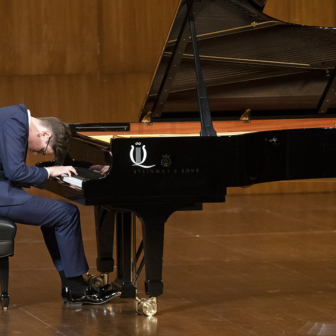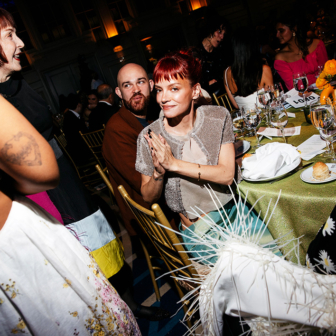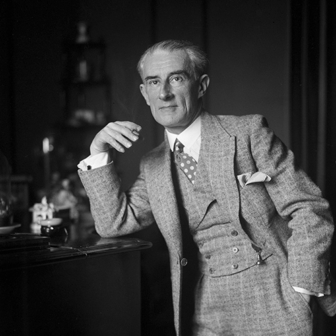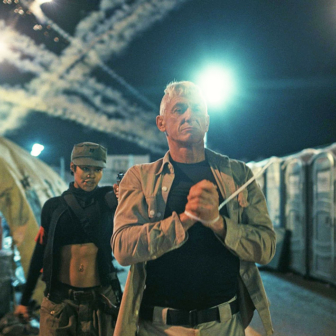I’m just old enough to recall where I was when I heard about the assassination of President Kennedy: I was six, watching television with my family, and there was a newsflash. When Neil Armstrong walked on the moon, I was twelve years old, trying and failing to keep my eyes open in the middle of the night, waking to discover the moonwalk had happened while I’d slept. But I don’t remember the Beatles’ break-up.
On the face of it this is odd, for I was a kid from Liverpool and a mad-keen fan, but the truth is nobody really remembers where they were when the Beatles disbanded, because there was no single moment at which it happened. After about eighteen months of rumours and newspaper articles, Paul McCartney confirmed in April 1970 what we already knew — that the group was no more. A month later, when the album Let It Be and an accompanying film of the same name were released, it was anticlimactic.
That film, directed by Michael Lindsay-Hogg, had been shot during the album sessions back in January 1969, the idea being that the group would write a new set of songs then perform them at their first concert in nearly three years. Initially, this was to have taken place in North Africa — a Roman amphitheatre in Libya was one possibility. More modestly, North Africa became North London — an open-air concert on Primrose Hill where the Beatles would set up and play with no announcement. Finally, as everyone knows, they just went upstairs and played on the roof until a bewildered constabulary asked them to pack it in.
This was their last live performance (“and we hope we passed the audition”), and its context in the film was the dying days of a dysfunctional group barely able to stand each other’s company. But that was an editorial interpretation. Rumours of animosity between the members of the Beatles were seldom completely accurate. In Peter Jackson’s new film, The Beatles: Get Back, cut together from sixty hours of footage (fifty-eight of them unused by Lindsay-Hogg), the four musicians, working cooperatively in the studio, read a column in the tabloid Daily Sketch about their impending break-up, complete with allegations of physical violence between John Lennon and George Harrison, and mock the old hack responsible.
This isn’t to say the four weeks of sessions lacked moments of tension. At one point, in an episode inexplicably omitted from Lindsay-Hogg’s film, Harrison walks out and doesn’t return for several days (“If he doesn’t come back by Tuesday, we’ll get Clapton”). The following morning, only Ringo shows up. But the atmosphere, overall, is one of good-natured collaboration, resulting in an extraordinarily productive month. The Beatles not only worked up the songs for Let It Be, but also half the songs for Abbey Road and quite a few that wouldn’t see the light of day until their solo albums began to appear. Paul is already trying out “Another Day,” George has “All Things Must Pass,” and John is in the early stages of “Gimme Some Truth” and “Jealous Guy.” Indeed he has the whole tune of “Jealous Guy” but a completely different set of lyrics — at this stage the song is called “On the Road to Marrakesh.” So well was the group working together that three weeks after the rooftop concert, they were back in the studio piecing together Abbey Road.
The most common criticisms of Jackson’s three-part film, which runs to nearly eight hours, are that it’s too long (given that this is the director who turned The Hobbit, a comparatively slim novel, into an eight-hour trilogy, I think we got off lightly) and that it’s boring. The second criticism is interesting. I think the film is honest, rather than boring. Anyone who’s hung around a recording studio (or film set or theatre) can attest to the fact that there’s a lot of waiting for something to happen. Here, the Beatles aren’t just recording songs, they’re writing them, and songs don’t spring spontaneously to life, even if you’re Lennon or McCartney. They take shape slowly, and they require work. Often the work occurs, to borrow from Lennon, “while you’re busy making other plans,” or as happens here while drinking tea or white wine, smoking cigarettes and consuming alarming amounts of toast (it was the white bread consumption that concerned me).
In contrast to so many documentaries about the making of a great album, which show us brilliant people having one brilliant idea after another, The Beatles: Get Back is full of creativity’s longueurs. A recurrent problem is that after years of overdubbing and other studio trickery, the Beatles, once again writing for live performance, find themselves a member short. The “fab four” are no longer enough. The songs seem to require a keyboard player, yet when Paul or John sits at the Blüthner grand or Fender Rhodes, the songs are suddenly lacking a bass or a rhythm guitar.
Enter Billy Preston like a deus ex machina. He’s an old friend from the group’s Hamburg days, when he was backing Little Richard. Visiting London, he stops by to say hello, sits down at the keyboard and never leaves. He also cheers everyone up. Further tension is dispelled — and those longueurs filled — with an endless variety of ad hoc performances: old blues songs, early rock & roll hits, numbers from musical theatre, spoofy renditions of the Beatles’ own songbook, and novelty items such as “Gilly Gilly Ossenfeffer Katzenellen Bogen by the Sea,” to which, it transpires, they all know all the words.
Jackson’s film shows us what’s going on around the making of the album: Yoko Ono is ever-present, though, contrary to rumour, the other Beatles seem to like her; Linda Eastman and her young daughter are there; producer George Martin flits about looking for something to do (there are no tapes to cut up and throw in the air on this album); and those two supreme shysters Allen Klein and Alex Mardas hover at the perimeter. The whole project nearly fails before it’s begun because “Magic Alex” has built a new recording studio that doesn’t work. At this point George Martin appears to be biting his tongue. But Jackson’s focus, rightly, is the music — it is, after all, the only reason we’re still interested in these people — and the film’s most fascinating moments involve the sight and sound of Beatles songs taking shape.
At first, “Two of Us” consists of a couple of catchy ideas, but gradually the song’s metrical complexity emerges. In its final version, as the perfect little pop song that opens Let It Be, it will have alternating bars of six, four and three beats, but at this point Paul just knows that a particular part should be “like a waltz.” Even when they have the rhythm under their belt, the song isn’t right. They keep slowing it down, and eventually John suggests it could be “quieter.” Out come the acoustic guitars and the thing falls into place.
The sharing of ideas that had always been a hallmark of the Beatles’ songwriting is continuously on show. George is working on “Something.” So far, he has “Something in the way she moves / Attracts me like,” but he doesn’t know what comes next and asks for suggestions. Lennon says that at this point anything will do if it allows him to keep working on the music, and proposes “Attracts me like a cauliflower.” Later, it’s “Attracts me like a pomegranate”, which is rhythmically more precise.
The film’s best sequence is the rather swift emergence, one morning, of “Get Back.” Paul plays the rhythm on his bass, adding a few nonsense words. In a matter of seconds, “Get Back” starts to be recognisable. George and Ringo, pottering about the studio, suddenly get interested and join in. John hasn’t even arrived for work, and the song exists. Later we hear prototype verses about racial prejudice (“Get back to where you once belonged”), but the song’s social conscience is short-lived. “Jo Jo Jackson left his home in Arizona,” Paul sings. Later, minus his surname, Jo Jo leaves “his home in Tucson, Arizona.” “Is Tucson in Arizona?” John asks. We hear the song over and over, increasingly coming to resemble the version we know, as John insists the introduction start from nothing and grow louder.
It’s extraordinary to eavesdrop on it all, and when it’s over you find that you can’t get this most underrated of the Beatles’ albums out of your head. But then, as Giles Martin, son of George, has remarked, an album that contains “Get Back,” “Let It Be,” “Across the Universe,” and “The Long and Winding Road” should never have been underrated in the first place. •




